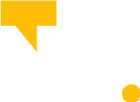A well-structured Chart of Accounts (COA) is the foundation of effective financial management for any business. A COA is a structured listing of all the financial accounts and categories used by a business to record its financial transactions. It serves as a framework for organising and classifying financial information, providing a standardised way to track, categorise, and report on a company’s financial activities. Each account in the COA represents a specific financial element, such as assets, liabilities, equity, revenue, and expenses. In this blog, we’ll explore the components of a good COA and how it can benefit your business.
Characteristics of a Good Chart of Accounts
- Relevant and Specific: An effective COA provides a comprehensive view of all areas of your business that spend or make money. This facilitates informed decision-making and accurate financial reporting. Your COA should align with your business’s needs and avoid unnecessary accounts that clutter your system.
- Logical and Consistent Numbering: Organise your accounts hierarchically and group related accounts together. This logical structure simplifies financial reporting.
- Flexible and Scalable: Your COA should adapt as your business evolves. Whether you’re a small startup or a growing corporation, your COA should remain flexible and reflect changes in your business, industry standards, or regulatory requirements.
- A COA is typically organised with balance sheet accounts preceding profit and loss accounts. Balance sheet accounts represent a company’s financial position at a specific point in time, and include assets, liabilities, and equities. Profit and loss accounts represent the financial performance of a company over a specific period, and include revenue, expenses, gains, and losses.
Organising and Structuring a Chart of Accounts
Organising and structuring a COA is crucial for effective financial management and reporting. A well organised COA helps ensure that financial data is accurately recorded, easy to retrieve, and can be used for analysis and reporting. Here are best practices for organising and structuring a COA:
Understand Your Business: Understand your business operations, industry-specific needs, and reporting requirements to shape your COA structure.
Identify Categories and Subcategories: Start with high-level categories (assets, liabilities, equity, income, expenses) and break them down further if needed (e.g., current assets, fixed assets).
Maintain a Logical Sequence: Organise accounts in a logical order within each category and subcategory. For instance, list current assets in order of liquidity (e.g., cash, accounts receivable), and list expenses in a manner that follows the flow of your operations.
Use a Consistent Numbering System: Assign a unique account number to each account. A common practice is to use a numbering system where the digits convey meaning. For example, the first digit could represent the account category (e.g., 1 for assets, 2 for liabilities), and the subsequent digits represent subcategories or individual accounts.
Standardise Naming Conventions: Establish clear naming conventions for accounts. Use names that are intuitive, concise, and standardised. For example, “Accounts Payable” is more straightforward than “Money We Owe to Suppliers.”
Document the COA: Maintain documentation that explains the purpose and use of each account. This documentation is helpful for new staff and for ensuring consistency in data entry.
 Using Technology for an Efficient Chart of Accounts
Using Technology for an Efficient Chart of Accounts
Customisation: Sage 200 allows businesses to customise their chart of accounts to align with industry standards, company structure, and reporting requirements. This customisation ensures that the COA is tailored to your business’s needs, making it more efficient in categorising financial data.
Hierarchical Structure: Sage 200 allows for the creation of a hierarchical structure within the COA. This means you can organise accounts into categories and subcategories, making it easier to navigate and analyse financial data.
Integration: Sage 200 integrates with other business systems, including CRM, inventory management, and payroll, among others. This integration can help ensure that all financial transactions are properly recorded in the COA, reducing errors and duplication.
Automation: Automation features in Sage 200 can help streamline the COA creation and maintenance process. For example, it can automate the posting of recurring transactions, saving time, and reducing the risk of manual entry errors.
Reporting and Analytics: Sage 200 provides robust reporting and analytics tools. These tools can help analyse financial data and identify trends, allowing for more informed decision-making. The COA is the foundation for these reports, ensuring that the data is well-structured for analysis.
Scalability: As your business grows and evolves, your financial needs may change. Sage 200 is designed to be scalable, so the COA can adapt to accommodate new accounts or changes in business structure without significant disruption.
User-Friendly Interface: Sage 200 offers a user-friendly interface that makes it easier to manage and maintain the chart of accounts. This ease of use can lead to greater efficiency in managing financial data.
Overall, Sage 200 helps businesses create an efficient chart of accounts by providing tools for customisation, automation, integration, and reporting, all of which contribute to a more streamlined and organised financial management process.
In summary, a good Chart of Accounts is the cornerstone of effective financial management. It must be tailored to your business’s unique needs, logically structured, and adaptable. By following best practices and leveraging technology such as Sage 200, you can create a COA that empowers your business to make informed financial decisions and achieve long-term success.
If you’re looking for a Sage solution that will help transform your business, or you would just like to learn more about the Sage products on offer, please don’t hesitate to get in touch. You can contact us on 03300 245447 or email info@techsol.notorious.build.
Partnering with Sage for over 20 years, our experts have the knowledge to help answer any questions you may have.






